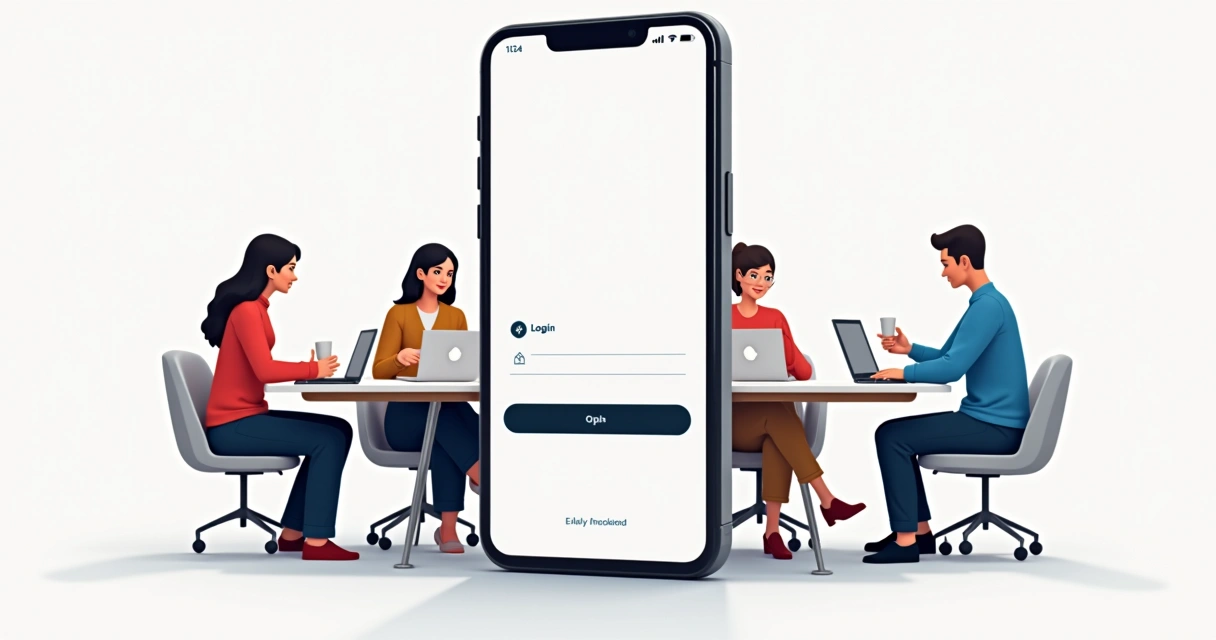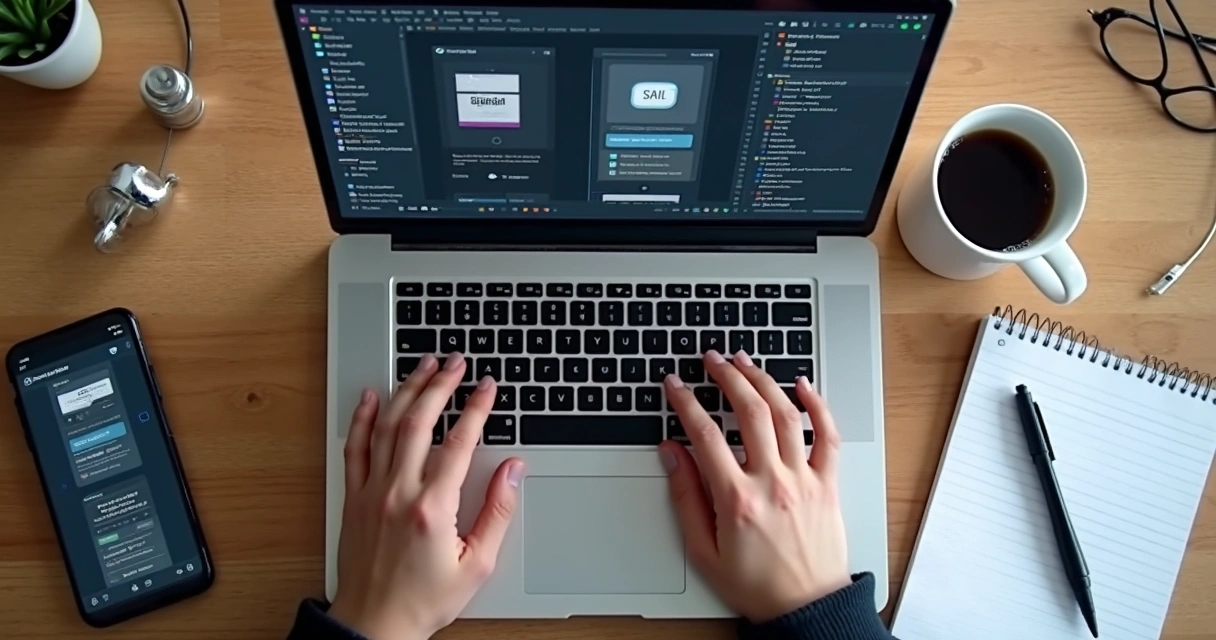Creating something new always begins with an idea. The real challenge? Turning that spark into a real, working digital product – without draining your bank account or burning months in endless development. Why is the concept of building Minimum Viable Products (MVPs) on a budget suddenly everywhere? Because the old way of dumping years and small fortunes into software is, frankly, out. Founders want proof, users want value, investors want traction. Fast and wallet-friendly.
In this guide, I’ll walk through exactly what an MVP is and why it's central to modern digital product strategy. Then I'll break down the exact steps to keep costs in check, from picking the right features and tools, to clever hacks like using AI, no-code solutions, and working with the right development partners. And yes, I’ll sprinkle the journey with stories, lived experience, studies, and practical suggestions – flaws and all.
Build small, launch early, and learn faster than anyone else.
What is an MVP, really?
An MVP, or Minimum Viable Product, is the simplest working version of your idea that still solves a problem for users. It’s not just a prototype or rough mockup. Instead, it’s a real product, but stripped of bells and whistles. The point is to test a key assumption: Will people use it? Will they pay for it? Does it solve their pain?
Think of the MVP as a bare-bones bicycle with working wheels and brakes. You show it to people, they ride it, and only then do you decide if it needs a basket, a bell, or maybe even two seats.
According to an explainer from Johns Hopkins University, the MVP is all about testing with real users—early and often. Companies and governments use MVPs to avoid costly wrong turns. Instead of spending a year imagining what people want, you let them show you what really matters.
That’s why, for startups and established businesses alike, MVPs are now the gold standard for validating ideas before heavy investment. As the Ross Business+Tech blog at University of Michigan bluntly puts it: “Startups often fail because they build too much, too soon, and what they build isn’t quite right.”
Why MVPs matter for validation
- They let you test real demand before betting big
- User feedback drives smarter decisions and helps avoid wasted effort
- They provide a tangible product to show investors
- You learn what users want, fast – with real usage, not just theories
If you’re an entrepreneur staring down a blank screen, MVP thinking is almost always where to begin. Even veteran teams like those at DeMeloApps use lean MVP strategies to shorten time to market, save budget, and help clients test big ideas without big risk.
 The real-world cost of building digital products
The real-world cost of building digital products
Before we get to the “how”, let’s face the price tag. Software is not always cheap. For example, a research article on web-based health promotion programs calculated the total cost of just one interactive project at nearly $392,000. For most startups, that’s out of reach.
But here’s the catch: most new digital products don’t (and shouldn’t) cost that much up front. The right MVP mindset can radically cut these numbers. Rather than building everything, you start with a focused version designed to prove your idea works.
Building leaner MVPs is what has enabled companies like DeMeloApps to help founders launch more ideas for lower budgets, and get to revenue faster. The secret isn’t in spending more – it’s in spending smarter.
The only features that matter at first are the ones your first users will love.
Benefits of affordable MVP development
- Faster release: Get to real users in weeks, not years.
- Early feedback: Build what users actually want, not what you imagine.
- Lower financial risk: Save capital for growth and pivots, not wasted code.
- Investor interest: Attract backing by showing real progress and learning.
- Iterative learning: Each launch teaches you something vital for the next round.
And if you’re wondering if investors really care about scrappy MVPs, they do. Traction and proof of demand matter more than pitch decks. Clean, minimal MVPs show you’re focused – and practical. They invite collaboration instead of never-ending speculation.
7 steps to lower MVP costs – fast and effectively
1. sharpen your product vision
Before any code or design, everything starts with clarity. What problem are you solving? Who needs this right now? Avoid the urge to please everyone or to imagine a “complete” solution on day one. A focused vision leads to a focused build.
- Write down the main problem – in one or two sentences.
- Describe your ideal first users (be specific, e.g., “university students planning group trips”).
- List the single most valuable outcome for users. Strip away the rest.
It’s shockingly easy to skip these steps, but skipping them is why 9 out of 10 startups overbuild and overspend. Strong MVP partners like those at DeMeloApps often kick off every project by helping their clients stay laser-focused on the core problem first.
You can always add features later. You can’t undo wasted weeks.
2. prioritize features with brutal honesty
Put every possible feature you can imagine down on paper. Now imagine only being able to ship three of them. Which would you pick? Which could wait?
- Rank features by impact and urgency, not comfort or preference.
- Ask: If this was the only thing built, could users still find this valuable?
- Be disciplined – sometimes just one feature is enough to start.
There’s a helpful approach described by the Software Engineering Institute at Carnegie Mellon called the Minimum Viable Capability Strategy. You identify the “smallest set of features” that still delivers value, launch, and use feedback to grow.
 If you’d like more structure, methods like Lean Canvas or MoSCoW (Must/Should/Could/Won’t) can help distill which features matter now versus next. But even without fancy frameworks, a few sticky notes and a blunt question – what must be in v1? – works wonders.
If you’d like more structure, methods like Lean Canvas or MoSCoW (Must/Should/Could/Won’t) can help distill which features matter now versus next. But even without fancy frameworks, a few sticky notes and a blunt question – what must be in v1? – works wonders.
3. pick the leanest path: methodologies and prototyping
You don’t need a detailed specification or a year-long plan. Instead, consider Lean approaches that favor rapid feedback cycles, and find ways to test ideas with clickable wireframes or mockups before writing a line of code.
- Adopt Lean Startup thinking: Build – Measure – Learn.
- Use free or cheap tools (like Figma, Miro, or Balsamiq) to make interactive prototypes.
- Share mockups with potential users and watch them interact. The feedback will surprise you.
A case study from the Center for Injury Research and Prevention describes how their MVP health apps could be tested and improved much sooner by showing users early clickable drafts – saving countless hours.
Low-fidelity wireframes expose hidden flaws in your ideas. They let you test flow, language, and value promises. For DeMeloApps and teams like them, this step is non-negotiable. It means development doesn’t start until the biggest assumptions are challenged.
Test your concept with the most basic version people can actually use.
4. choose the right tech stack for your budget
Fancy frameworks are tempting, but remember – the best technology is often the one your team understands or that gets you to market fastest. Ask big questions about what’s truly necessary for version one:
- Is a cross-platform tool (like Flutter or React Native) faster and cheaper than two separate builds?
- Do you actually need a custom backend, or will an existing platform or cloud tool work?
- Would a no-code/low-code option speed things up (e.g., Bubble, Glide, OutSystems)?
- What tools have strong free or affordable tiers for startups?
There’s no universal “right answer” here. At DeMeloApps, for instance, the stack is chosen based on each client’s unique needs, budget, and goals—not fads. Sometimes a simple web app is enough, sometimes a hybrid app makes more sense.
What about no-code and low-code?
No-code and low-code tools have improved dramatically. For some use cases – internal dashboards, demo versions, or simple apps – they slash costs and time. But even here, you must judge carefully. Don’t force them to do what they can’t. Still, for many MVPs, they offer startups a first launch without painful investment.
Want more on this? The DeMeloApps MVP Starter program helps clients weigh the pros and cons of these approaches for each individual idea.
 5. speed up with AI and smart outsourcing
5. speed up with AI and smart outsourcing
AI tools, like code generators and automated testing platforms, are starting to reshape development. While not a silver bullet, they can take on routine tasks, create code snippets, spot bugs, and even design early wireframes, which cuts back on hours and errors.
- Try using AI-based code completion to help build faster (e.g., Copilot).
- Automate basic QA and regression tests to release more often.
- Use AI-powered design tools to mock up user interfaces quickly.
Beyond AI, smart outsourcing is another lever. Nearshore or offshore development teams can lower labor costs, but only if communication is tight and expectations are clear. The key: keep the MVP scope small, test their first deliverables early, and stay hands-on.
One reason DeMeloApps is chosen often by startups and universities is their ability to provide cost-effective, close-contact development – something that's hard to get with random freelancers or distant agencies. Coordinating with a trusted team, even abroad, can work if everyone agrees on rapid, focused delivery.
Small, skilled teams and smart tech make speed possible. And speed = savings.
6. collect and act on user feedback fast
Launching the MVP is only half the job. After the first users try it, their comments reveal what you really need to focus on next. Here are a few rapid ways to collect insights:
- Simple surveys after users try the main feature (“Did this solve your need?”).
- Usability sessions (in person or remote) where you watch users use the product.
- Tracking user actions with basic analytics tools (e.g., where do they get stuck?).
The CHOP article on building an MVP emphasizes that real, actionable user feedback always trumps assumptions. Each round of observation and improvement narrows down what the next build should be.
But here’s a little secret: users are often polite or vague. You have to look beyond scores and ratings. Watch if your feature gets actual use. Notice what people skip or complain about. That’s where the gold is.
Your users will surprise you. Let them guide your roadmap.
7. master your budget: tips for stretching every dollar
- Start tiny: Launch a demo or “pre-MVP” to show to a handful of users before even public release.
- Automate where possible: Use templates, AI, and established design kits.
- Limit revisions: Lock features for each sprint or milestone. Random tweaks drain budgets.
- Document as you go: This saves you from future confusion and extra costs.
- Outsource non-core tasks: Don’t get bogged down in legal, hosting, or content work.
- Find trusted partners: Agencies like DeMeloApps are built for close contact and quick turns, so costs don’t spiral.
For those who want templated help, tools like the MVP Builder solution at DeMeloApps provide a simple step-by-step framework and cost calculator before you even commit.
 Choosing the right development partner or agency
Choosing the right development partner or agency
Picking who actually builds your MVP can be as big a decision as what gets built. Whether you look to a specialist agency, a local dev shop, or even a remote freelancer, ask yourself:
- Do they get your vision? – Have they built lean MVPs before? Do they ask questions that challenge your assumptions?
- How close is their communication? – Are you talking to actual developers, or only account managers?
- Can they show you a roadmap, budget, and timeline up front? – Hidden fees haunt ambitious projects.
- Do they support fast iteration? – This isn’t a “big reveal” movie. Expect, and ask for, weekly or biweekly demos.
- Can you see their past work and references? – Proven testimonials, real apps, and open feedback should back up their claims.
The About Us page at DeMeloApps outlines the importance of client collaboration, rapid delivery, and flexible engagement – all characteristics that can help you succeed with an MVP-first approach.
Find a partner who matches your hunger for progress, not perfection.
If you’re just starting and unsure of cost, estimate the project scope and price using a tool like the DeMeloApps Quotation Assistant. It can ground your plan in real numbers, not wishful thinking.
From MVP to market: the long game
After launch, what’s next? Truth is, the MVP is only the first step. Each round of user feedback reveals new opportunities and new priorities. Keep refining. Keep releasing. The best products grow in small, healthy leaps, not giant costly jumps.
- Iterate quickly: Weekly or biweekly updates work better than “big” launches once a year.
- Share progress: Keep investors and team members in the loop with real metrics.
- Be willing to pivot: Sometimes the original idea leads to an even better use case. Listen and adapt.
- Don’t overbuild: Most users only use 20% of features. Look carefully before adding more.
Teams that internalize this cycle – ship, listen, refine, repeat – can outpace bigger rivals and discover traction sooner. DeMeloApps has seen clients graduate from MVP to full-scale platforms by keeping this cycle tight and lean throughout the journey.
 Conclusion: launch, learn, and don’t look back
Conclusion: launch, learn, and don’t look back
There will always be more ideas than budgets, and more dreams than days in the year. But with a clever, focused MVP approach, it’s possible to test, validate, and grow your biggest ambitions – without draining your savings or waiting for permission.
Affordable MVP development isn’t about building less. It’s about building smarter. That means clear priorities, low-friction tools, hands-on users, and partners who understand that progress beats perfection every time.
Start simple, launch now, and let the world help you shape your product.
If you’re ready to turn a seed of an idea into a working MVP, or need help keeping costs low on your next project, reach out to the team at DeMeloApps. You’ll find expert advice, lean programs like the MVP Starter, and personalized help from developers who care deeply about your product’s first traction.
Looking for a budget? Want more strategies for building bravely? Start a conversation today and see how DeMeloApps can power your digital launch at a price that leaves room for growth.
Frequently asked questions about affordable MVP development
What is affordable MVP development?
Affordable MVP development is the process of creating a basic, working version of a digital product with the smallest set of features needed to satisfy first users – at the lowest reasonable cost. The goal is to validate core assumptions, collect real user feedback, and test demand quickly before investing in a complete, feature-rich build. By focusing on the smallest, most valuable functionality, businesses and startups can make smarter decisions and avoid expensive overbuilding.
How to build an MVP on a budget?
To build an MVP on a budget, start by narrowing your idea to a specific problem and target audience. Prioritize just one to three features that solve real pain. Use rapid prototyping tools or no-code/low-code platforms where possible, as they save time and money. Consider working with cost-effective development teams who communicate directly and support frequent iteration. Focus strongly on early feedback, limit design polish to what’s needed for usability, and avoid scope creep. Programs like those from DeMeloApps are structured to help founders stick to these principles.
How much does MVP development cost?
The cost of MVP development varies a lot. Full-scale complex projects, like major health apps, can cost hundreds of thousands of dollars, as seen in a digital health software cost study. Most startups, however, can build basic MVPs for far less – sometimes even under $10,000 if they use no-code tools and focused feature sets, or up to $50,000 for more sophisticated MVPs. Price is always determined by scope, technology, and speed. Transparent estimation tools, like those offered by DeMeloApps, can help give realistic budget expectations early.
What are the best tips to lower MVP costs?
Lower MVP costs by being ruthless with your feature list – only ship what’s vital for first use and validation. Use no-code or low-code builders when you can. Tap into AI to handle repetitive coding, testing, or even design tasks. Work in small, focused sprints to reduce wasted time on big plans. Choose development partners who have a track record of building MVPs specifically and who show clear cost/timeline roadmaps. Seek early and honest user feedback to avoid expensive overhauls after release, and freeze your MVP scope before each development burst.
Is affordable MVP development worth it?
Yes, affordable MVP development is absolutely worth it for most entrepreneurs, small businesses, and innovation teams. Launching a basic, value-driven MVP rapidly allows you to test the true market fit, gather meaningful feedback, and demonstrate traction to investors – without spending big up front. The iterative learning it enables often saves money in the long run and shortens the path to a workable, loved product. Studies like those by University of Michigan Ross Business+Tech have shown that teams who validate ideas through MVPs waste less money and time.





